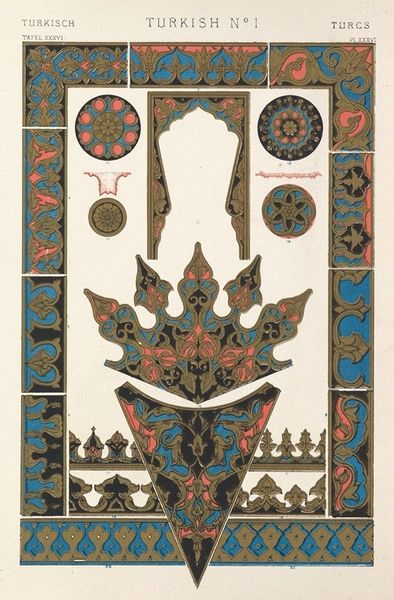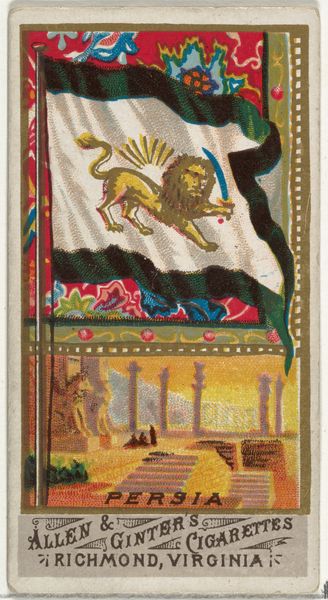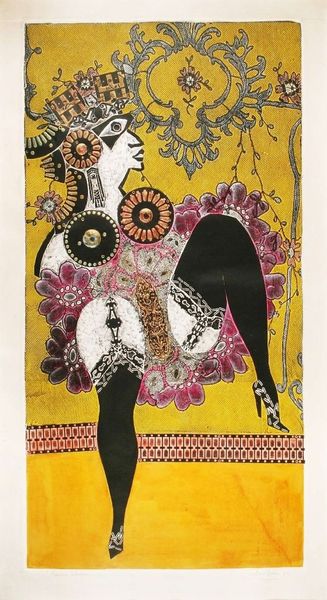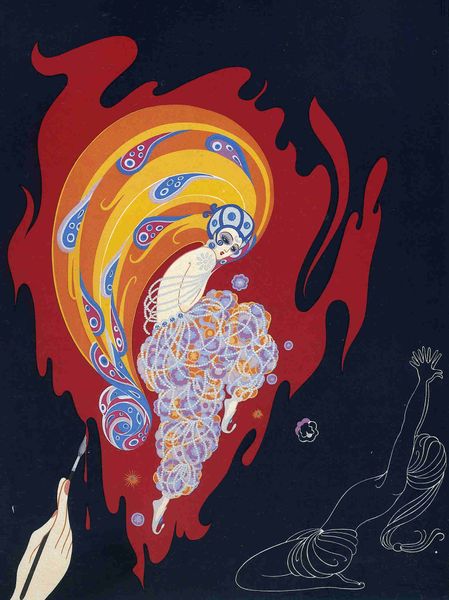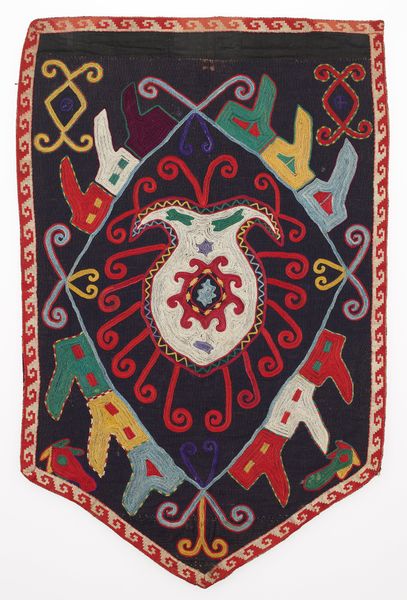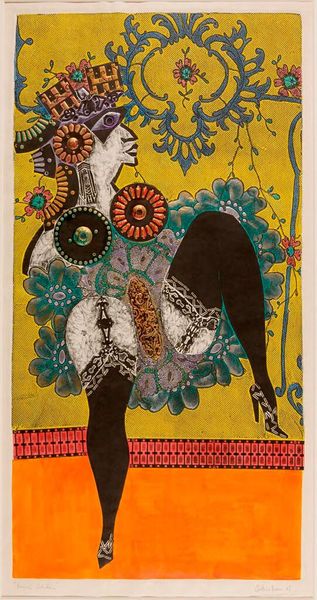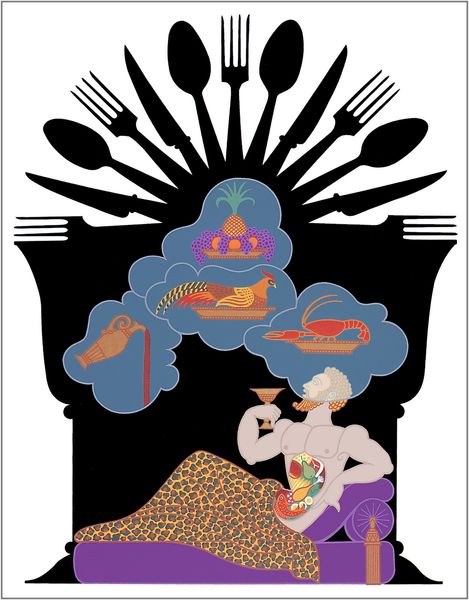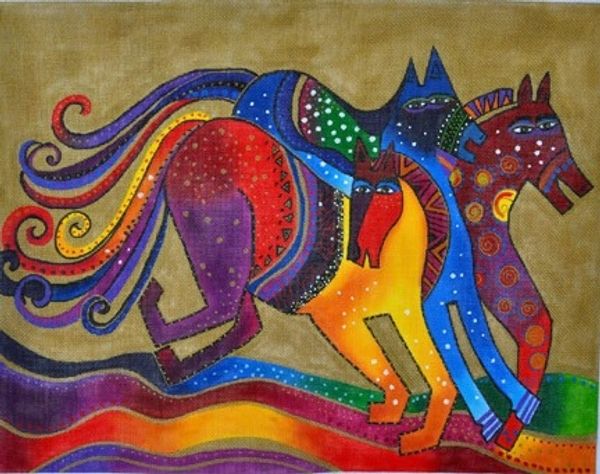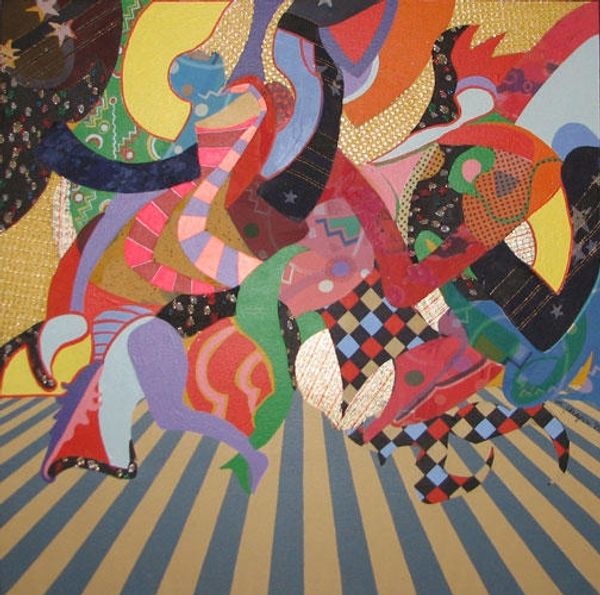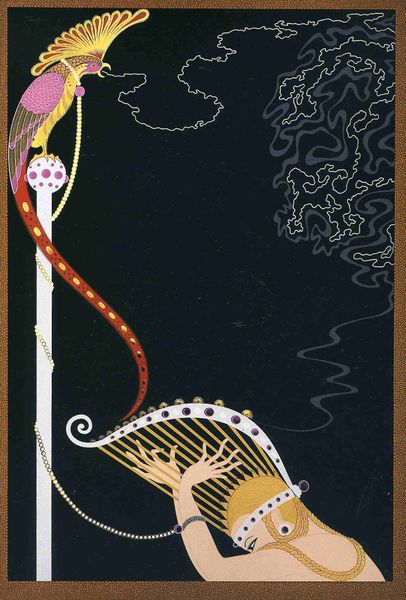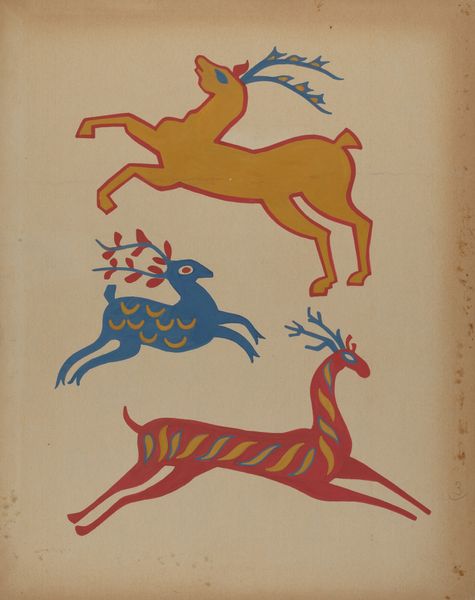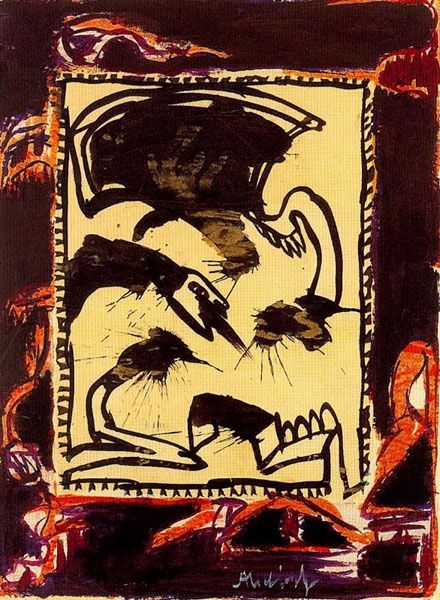
textile
#
abstract painting
#
egg art
#
pop art
#
textile
#
mural art
#
text
#
handmade artwork painting
#
tile art
#
fluid art
#
naive art
#
painting art
#
chaotic composition
Copyright: Tadashi Nakayama,Fair Use
Editor: Here we have Tadashi Nakayama's "Blue Horse" from 2003, and it seems to be mixed media, possibly incorporating textile elements. I’m immediately drawn to how the artist combined disparate patterns and textures within the horse itself. It feels almost fragmented, yet harmonious. How do you interpret this piece, especially considering the artist's choices in material? Curator: It's fascinating to consider this "Blue Horse" as a product deeply embedded in its means of production. Notice how the artist layers different materials. We have a central figure that could be achieved by many textile techniques such as dying, needle work or applique to incorporate patterns of production and manual work in an industrialised world. It directly challenges our ideas of labor, commodification and craft production. How does that understanding impact your original reading of harmony and fragmentation? Editor: I see what you mean! The way these different techniques were used, highlights not just surface decoration but also labour that shaped those patterns which may explain the impression of a fragmented image that in fact is a result of labour divisions in society? Also I read that Nakayama was deeply inspired by folk art and textiles, could that play a role? Curator: Exactly! The use of folk-art directly comments on the blurring of art, craft and design. By taking materials and design of artisanal character and re-producing them by textile medium. Editor: It certainly pushes boundaries! The combination feels very deliberate. I’m seeing how the medium amplifies Nakayama's message by prompting reflection on these production values and labor traditions. Curator: Absolutely! I see an excellent intersection of how meaning can derive by medium. I learned the folk inspiration in Nakayama's designs were very poignant to read the art's meaning.
Comments
No comments
Be the first to comment and join the conversation on the ultimate creative platform.

